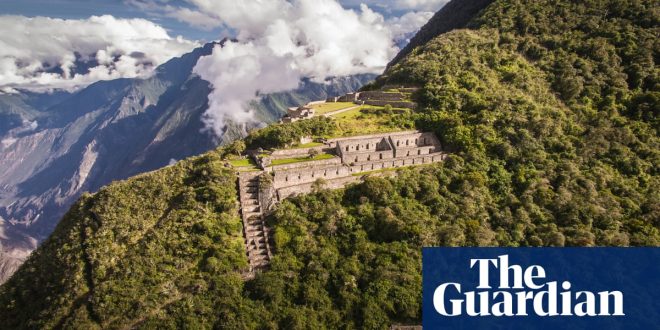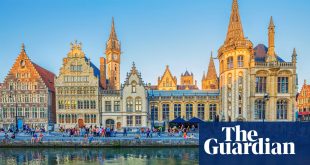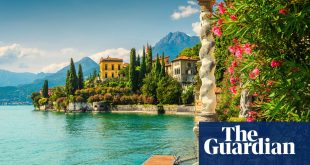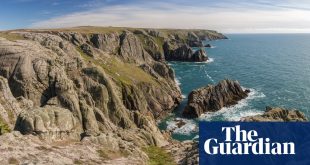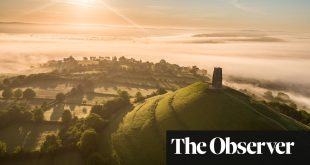‘It’s very simple,” Bruce says. “If travellers go far, on long-haul journeys, they should go for longer.” I’m sitting in a Peruvian mountain village with Bruce Poon Tip, founder of G Adventures, a Canadian travel company with a mission. Below us on a narrow rocky terrace, a group of brightly dressed women in bowler hats are chatting while they work. Some are spinning alpaca wool, others are knitting, and a couple are weaving narrow strips of cloth. “Travellers need to connect with locals,” Bruce continues, “but they should also bring economic benefits to communities.”
I am in South America on a mission myself. I want to see how, or if, tourism can help with the huge challenges of social inequality and the climate crisis. I’m taking Bruce’s advice about travelling for longer to heart: I am going to loop south through Bolivia, then start a 3,000-mile journey down the Amazon to where it empties into the Atlantic Ocean. En route, I want to see how the individual tourist can support worthwhile projects, particularly with Indigenous peoples, and also enjoy a wonderful experience.
Across the Andean valley, the mountainside is etched with terraces, like a great human thumbprint on the harsh high-altitude terrain. We are in Ccaccaccollo, a weaving community that is a showcase for the G Adventures method. In 2003, a woman from the village, Francisca, approached Bruce with a grievance. Their menfolk were porters on the nearby Inca Trail, carrying gear for foreign hikers. But no visitors had ever come to their mountainside village. The women were economically sidelined, left at home to dig potatoes, and financially dependent on the men.
Francisca takes up the story: “We had traditional weaving skills so we formed a co-operative, then asked Bruce to bring groups here. We wanted to sell the things we were making.”
For Bruce, it was a turning point. He had set up G Adventures in 1990 with the idea that travellers needed help to connect with locals, an ethos that had meant only using local guides. Here was an opportunity to do more. His hiking groups began stopping at the village on their way to the starting point of the four-day Inca Trail. Very quickly this revolutionised the village economy, giving the women cash, and power. It also changed G Adventures, bringing a more interventionist approach through a new foundation, Planeterra, whose sole objective was to help all locals benefit from tourism.
Now the Sacred Valley of the Incas is home to several projects: a ceramics workshop, new campsites and hiking routes, plus a spacious, well-designed restaurant that uses agricultural produce and workers from surrounding villages. Everything is owned and run by the communities.
Success has brought change, Bruce acknowledges. “We taught them business and entrepreneurship. They have money now and they spend it.” Bringing travellers closer to locals, it occurs to me, has also brought locals closer to the travellers – a significant side-effect. Francisca welcomes it: “Before we had nothing; now I have two daughters at university.”
Later that morning, I hear singing from a choir and learn that it’s coming from a Seventh Day Adventist hall. An elderly lady outside the hall tells me: “They came about 10 years ago. We also have the Mormons nearby, and Los Israelitas too.”
The latter are a fast-growing Christian cult who believe God is Peruvian and that Armageddon will be followed by the restoration of a communal Incan agrarian society. It’s a reminder that there are many competing ideas about future development in South America.
My next stop in the Sacred Valley is Machu Picchu, arguably the best-known archaeological site in the Americas, and a dizzyingly spectacular one too. The site is well managed, bussing tourists up from the railhead in the town of Aguas Calientes (at the time of writing, about 5,000 a day arrive by train then catch the bus to the site). Each visitor is given an arrival time, the route is precisely controlled, and the exit time is specified. Visits to the two mountain viewpoints cost extra. It’s a fantastic experience, as far as theme parks go. What I do not get is the feeling many visitors are searching for: reaching some lost world outside modern civilisation. Those who walk the Inca Trail, or one of the quieter alternatives, put in old-fashioned physical effort, but at the end of their hike, they enter the site through the same turnstiles and get the same experience.
Having seen this, I decide to try something different: a tough hike culminating in a remote mountain “lost city” only accessible on foot. Choquequirao is another abandoned Inca site, but in an entire year it sees the same number of visitors that Machu Picchu gets in a day, largely because there is no easy way to get there. I have heard that the walk is harder than the Inca Trail, and the ruins “almost” as spectacular.
That weasel word “almost” does cause some misgivings, but I join a small group in Cusco with high hopes. Our guide, Washi, gives us a candid assessment: “You will be very hot, very cold, very thirsty and very tired. You will walk all day and into the night. It may be the hardest thing you have ever done.” One of our group immediately pulls out.
A few miles beyond the town of San Pedro de Cachora, we step out of a minibus into the clouds. A few mules huddle together by a homespun cafe and gatehouse, where we register. Only a handful of names appear before ours in the hefty government ledger; they are hikers already out on the four-day circuit. Our gear is loaded on the mules and off we go, steadily descending through a sparse forest of ceiba trees into the Apurímac valley, headwaters of the Amazon.
after newsletter promotion
Washi and I chat about a subject close to many Peruvian hearts: politics. “In the 1980s and 90s,” he tells me, “this area was a stronghold of the Sendero Luminoso [Shining Path].”
The Sendero were a Maoist insurgency inspired and led by Abimael Guzmán, a left-wing philosophy professor from the Andean town of Ayacucho, who had witnessed China’s cultural revolution. His aims were not so different from those of today’s community tourism and sustainability movement: economic equality and empowerment for all, particularly Indigenous communities.
His methods, however, were not those of an ethically minded travel company. Guzmán procured automatic weapons and started a guerrilla war. Washi’s family, farmers in the high Andes, were caught up in the conflict. “If people helped the Sendero, the government soldiers killed them,” he says. “But if they helped the government, the Sendero killed them. My grandparents fled to Cusco and our lives changed.”
As we descend, the temperature increases. There are a couple of campsites in wooded areas, but mostly the vegetation gets drier and harsher. By the time we hit the valley bottom, next to the raging torrent that is the Apurímac, the heat is almost unbearable. But the river is icy cold, pouring down through this 3,000-metre-deep gorge from glacial origins almost 6,000 metres high. I clamber down to its edge and dip my hands. This is my first touch of Amazon water, nearly 3,000 miles from where my journey will end at Belém in Brazil. Swimming looks impossible.
We cross on a swaying suspension bridge, then start a brutal climb up the mountainside, enlivened only by fleeting appearances from hummingbirds. Our group splinters, each alone in our private agony. We reach our campsite at sunset and are astonished to find the local mule-supplied shop sells solar-cooled beer. Miles from any roads, the place is a tranquil haven with superb mountain panoramas.
The advantages of this smaller-scale trek are quickly apparent: local communities get direct financial benefit and the visitors are absorbed into their world, which remains essentially unchanged. Plans to build a cable car here and integrate into the mega-buck Inca Trail industry have been shelved, saving the locals, I reckon, from becoming day labourers on their own land.
At dawn the next morning we are moving again, pushing along the winding trail to reach the ruins while the light is good. As we emerge on the top, the clouds lift and we are treated to magnificent views. The ruins are not as extensive as those at Machu Picchu, but I am about to discover something that sets it apart. A trail leads down through a fragment of jungle to the head of a flight of ancient terraces. From there, 546 stone steps cascade down the mountain, a miracle of stone engineering. So steep is the drop that each terrace is a mere two or three metres wide. It was here that the last survivors of the Incan empire hid themselves away from the future, growing corn and chillis, hanging on to their way of life, and praying that the brutal reality of the Spanish conquest would never find them.
On the walls of the terraces, the Incas created elegant reliefs of llamas in white stone. At the bottom, I find the last terrace overgrown with jungle and the steps disappearing down into the thicket, proof that discoveries are still to be made here. I sit on the steps, alone in the “lost city”. There are no voices, no selfies, no one telling me to move along. I lie back and watch a condor soaring overhead.
The trip was provided by G Adventures, which offers a six-day trek to Choquequirao and Machu Picchu from £599, including local transport, guides and entry to archaeological sites. Holiday Extras can provide assistance with airport parking, travel insurance, hotels and transfers.
The second part of Kevin Rushby’s Amazon adventure will be published on Guardian travel on 24 June
 Top Naija News – Nigeria News, Nigerian News & Top Stories Top Naija News – Nigerian Newspapers, Nigerian News. topnaijanews is a daily Nigerian newspaper covering Latest News, Breaking News, Entertainment, Sports, Lifestyle and Politics.
Top Naija News – Nigeria News, Nigerian News & Top Stories Top Naija News – Nigerian Newspapers, Nigerian News. topnaijanews is a daily Nigerian newspaper covering Latest News, Breaking News, Entertainment, Sports, Lifestyle and Politics.
